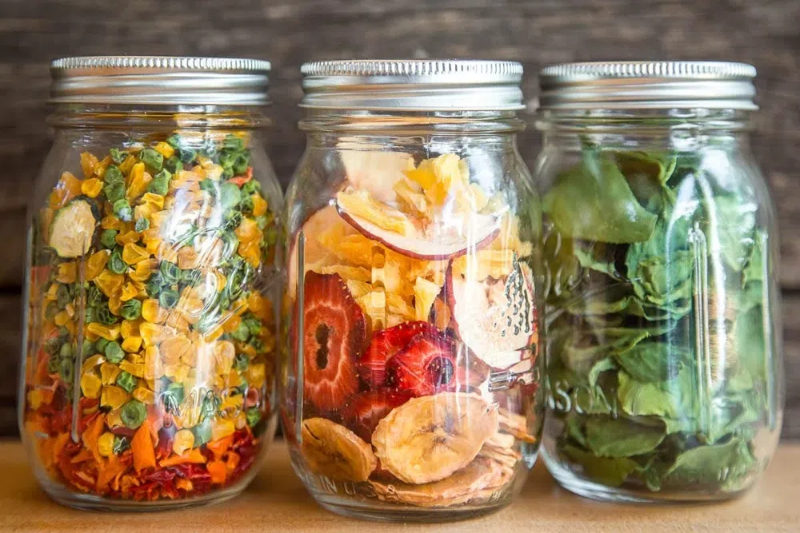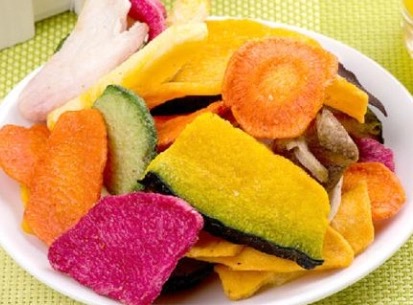
Content Menu
● Understanding Food Dehydration
● Choosing the Right Dehydrator
● Preparing Food for Dehydration
● Dehydrating Different Types of Food
>> Fruits
>> Vegetables
>> Meats
>> Herbs
● Tips for Successful Dehydration
● Using Your Dehydrator
● Creative Uses for Dehydrated Foods
● Safety Tips When Dehydrating Food
● Conclusion
● FAQ
>> 1. How long does it take to dehydrate food?
>> 2. Can I dehydrate cooked foods?
>> 3. What temperature should I use for dehydrating fruits?
>> 4. How do I store dehydrated foods?
>> 5. Can I use my oven instead of a dehydrator?
● Citations:
Dehydrating food is an ancient preservation technique that has gained popularity in recent years due to its simplicity and effectiveness. This method not only extends the shelf life of food but also concentrates flavors, making dehydrated foods a delicious and nutritious option for snacking or meal preparation. In this guide, we will explore everything you need to know about using a food dehydrator, including the best practices, types of foods to dehydrate, and tips for successful dehydration.

Understanding Food Dehydration
Dehydration is the process of removing moisture from food, which inhibits the growth of bacteria, yeast, and molds. By reducing the water content to about 5-20%, you can significantly extend the shelf life of various food items. The dehydrating process maintains most of the food's nutrients and flavors, making it an excellent choice for preserving fruits, vegetables, meats, and herbs.
Choosing the Right Dehydrator
When it comes to dehydrating food, choosing the right dehydrator is crucial. There are several types available:
- Electric Dehydrators: These are the most common and efficient option. They come with temperature controls and fans to ensure even drying. Electric dehydrators can handle large volumes of food at once.
- Oven Drying: If you don't have a dehydrator, your oven can serve as an alternative. Set it to a low temperature (around 140°F or 60°C) and keep the door slightly ajar to allow moisture to escape.
- Sun Drying: This method is suitable for warm, dry climates. Lay food out in direct sunlight on screens or trays for several hours or days.
- Air Drying: Similar to sun drying but done in shaded areas. This method works well for herbs and spices.
- Solar Drying: Solar dehydrators utilize sunlight to dry food efficiently without electricity.
Each method has its pros and cons, but electric dehydrators are generally recommended for their efficiency and ease of use.
Preparing Food for Dehydration
Proper preparation is key to successful dehydration:
1. Select Fresh Produce: Choose ripe, unblemished fruits and vegetables.
2. Wash Thoroughly: Clean all items to remove dirt and pesticides.
3. Cut Uniformly: Slice foods into even pieces (about 1/4 inch thick) to ensure consistent drying. Use a mandoline slicer for best results.
4. Pre-Treat if Necessary: Some fruits like apples and bananas may brown during dehydration. Soaking them in a mixture of lemon juice and water can help preserve their color.
5. Blanch Vegetables: For certain vegetables (like carrots or broccoli), blanching before dehydration helps preserve color and nutrients.

Dehydrating Different Types of Food
Different foods require different approaches when dehydrating:
Fruits
- Best Choices: Apples, bananas, strawberries, peaches.
- Preparation: Cut into uniform slices; soak in lemon juice if desired.
- Drying Time: Typically 6-12 hours at 135°F (57°C).
Vegetables
- Best Choices: Carrots, bell peppers, zucchini.
- Preparation: Cut into even pieces; blanch if necessary.
- Drying Time: Usually 8-12 hours at 125°F (52°C).
Meats
- Best Choices: Lean cuts like beef or turkey for jerky.
- Preparation: Trim fat; marinate if desired.
- Drying Time: About 6-12 hours at 160°F (71°C).
Herbs
- Best Choices: Basil, oregano, thyme.
- Preparation: Remove stems; spread evenly on trays.
- Drying Time: Generally takes 1-4 hours at 95°F (35°C).
Tips for Successful Dehydration
To enhance your dehydration experience:
- Always dehydrate similar items together to ensure they dry at the same rate.
- Avoid overcrowding trays; proper air circulation is essential.
- Check periodically to avoid over-drying; food should be brittle or leathery but not sticky.
- Store dried foods in airtight containers in a cool, dark place to maximize shelf life.
Using Your Dehydrator
Follow these steps for optimal results:
1. Preheat your dehydrator according to the manufacturer's instructions.
2. Arrange prepared food evenly on trays without overlapping.
3. Set the appropriate temperature based on the type of food being dried.
4. Monitor progress regularly; rotate trays if necessary for even drying.
5. Once done, allow dried foods to cool before storing them properly.
Creative Uses for Dehydrated Foods
Dehydrated foods can be used in various ways beyond just snacking:
- Trail Mixes: Combine dried fruits with nuts and seeds for a nutritious snack perfect for hiking or camping.
- Soups and Stews: Add dried vegetables or meats directly into soups or stews during cooking; they will rehydrate as they simmer.
- Smoothies: Blend dried fruits into smoothies for added flavor without extra moisture.
- Baking Ingredients: Use powdered dried fruits as natural sweeteners or flavorings in baked goods like muffins or pancakes.
Safety Tips When Dehydrating Food
Food safety is paramount when dehydrating:
1. Use Fresh Ingredients: Always start with fresh produce to avoid spoilage during storage.
2. Monitor Temperature Settings: Ensure that you are using the correct temperature settings for different types of food to prevent bacterial growth.
3. Check Moisture Levels: Make sure all foods are thoroughly dried before storing them; any residual moisture can lead to mold growth.
4. Store Properly: Use airtight containers and store in a cool, dark place away from heat sources.
5. Label Your Containers: Always label your stored dehydrated foods with dates so you can keep track of freshness.
Conclusion
Dehydrating food with a dehydrator is an efficient way to preserve your favorite ingredients while enhancing their flavors. By following proper preparation techniques and understanding the specific needs of different foods, you can create delicious snacks that last for months or even years. Whether you're looking to make fruit leather for kids' lunches or jerky for camping trips, mastering dehydration opens up a world of culinary possibilities that cater to various dietary needs and preferences.
In addition to preserving food, dehydration can also help reduce waste by allowing you to use surplus produce before it spoils. With creativity and practice, you can turn your dehydrated ingredients into exciting meals that are both nutritious and flavorful!

FAQ
1. How long does it take to dehydrate food?
The time varies based on the type of food and thickness of slices but generally ranges from 6 to 12 hours depending on moisture content and desired texture.
2. Can I dehydrate cooked foods?
Yes! You can dehydrate cooked meals like stews or rice dishes by spreading them on non-stick sheets before drying until they reach a crumbly consistency.
3. What temperature should I use for dehydrating fruits?
Fruits typically dehydrate best at around 135°F (57°C).
4. How do I store dehydrated foods?
Store them in airtight containers or vacuum-sealed bags in a cool, dark place away from direct sunlight and heat sources.
5. Can I use my oven instead of a dehydrator?
Yes! Set your oven to a low temperature (around 140°F or 60°C) with the door slightly ajar to allow moisture escape while drying your food evenly.
Citations:
[1] https://www.everythingkitchens.com/media/manual/7100.pdf
[2] https://www.freshoffthegrid.com/dehydrating-food/
[3] https://homesteadingfamily.com/preservation-101-intro-to-dehydrating-food/
[4] https://www.youtube.com/watch?v=mtDzdYoyeR8
[5] https://www.schooltube.com/dehydrating-food-a-comprehensive-guide-for-beginners/
[6] https://www.youtube.com/watch?v=lEUA2t2XD5M
[7] https://learn.eartheasy.com/guides/a-beginners-guide-to-dehydrating-food/
[8] https://www.commercialdehydrators.com.au/dehydrating-recipes-filters
[9] https://www.youtube.com/watch?v=rR2G5UO-5Ms
[10] https://www.youtube.com/watch?v=Zl4wTcCPJu0











